Hey! Are you a creative professional entrepreneur?
Have you been looking for a guide to help you build your copywriting skills?
If your answer is yes, you are at the right place.
Welcome to “Copywriting for Creative Professionals: Write Authentic Brand Copy,” your ultimate guide. Whether you are an artist, designer, animator, photographer, or other creative professional entrepreneur, this guide is for you.
I know you find crafting compelling copy challenging as a creative entrepreneur because you lack knowledge about the science and secret sources behind attention-grabbing copy.
In this guide, I have covered strategies, tips, and techniques for writing attention-grabbing copy.
Here, you will learn to:
- Develop your unique brand voice.
- How you can engage your audience.
- How you can improve your conversion rate.
- You will learn about strategies for writing compelling copy.
- How to market yourself through storytelling.
In a nutshell, I have to say that after completing this guide, you will have the knowledge to transform your approach to copywriting. This will ultimately help you get more clients and make your brand impactful and memorable.
So, Are you ready to lift your brand and connect with your target audience on a deeper level?
Yes 😀!
Let’s get started!
Say Your Brand Story
In this section, I will discuss with you how you can find your brand’s unique voice and tell who you are and what you do in an engaging way.
A brand story is essential for your creative business because it helps you set yourself apart from the competition. It is useful when you are writing descriptions of your social media profile, online shop, and about-us page for your website.
It helps you connect with your target audience on a deeper level and translate your unique journey into words that resonate.
Let’s discuss steps that will help you craft your brand story:
Step 1 Find Your Voice
Brand voice is all about the uniqueness and personality of your brand, which reflects its values and culture.
To find a voice for your brand, you should work on these steps:
- Know Your Why: Here, simply find your purpose and value what motivates your creative journey.
- Think about your target audience: who they are and what kind of tone resonates with them.
- Find out your brand personality: Is it formal, casual, practical, inspirational, etc.? Consider your brand image and express it in words.
- Analyze others: Check out your competitor’s voice style. How do they use language? The answer is simple: do not copy them. Just take inspiration and then create your own unique voice.
These steps can help you create your own unique brand voice. Once you have created it, make sure your brand voice is consistent across all channels.
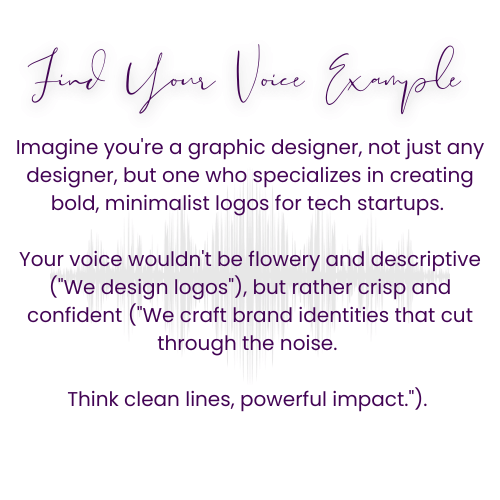
Step 2 Make it Personal
Personalization is another important factor when discussing a brand story because every compelling brand story starts with a personal touch.
Personalization helps you to connect with your target audience. It builds brand narrative and significantly enhances brand appeal.
Let’s discuss tips that will help you personalization factors in your brand story:
- Use the storytelling approach. Write like you are telling a story because people like to connect them with stories. Tell how your journey begins, your aha moments, and what you have done.
- Don’t be academic. Use “I” when you mention yourself in the brand story. It will create a sense of authenticity and closeness.
- In order to build trust, share your values and include personal anecdotes. This will foster your connection with your audience.
- Incorporate an emotional touch and add your personality. Don’t be afraid to add humor and enthusiasm to your story.
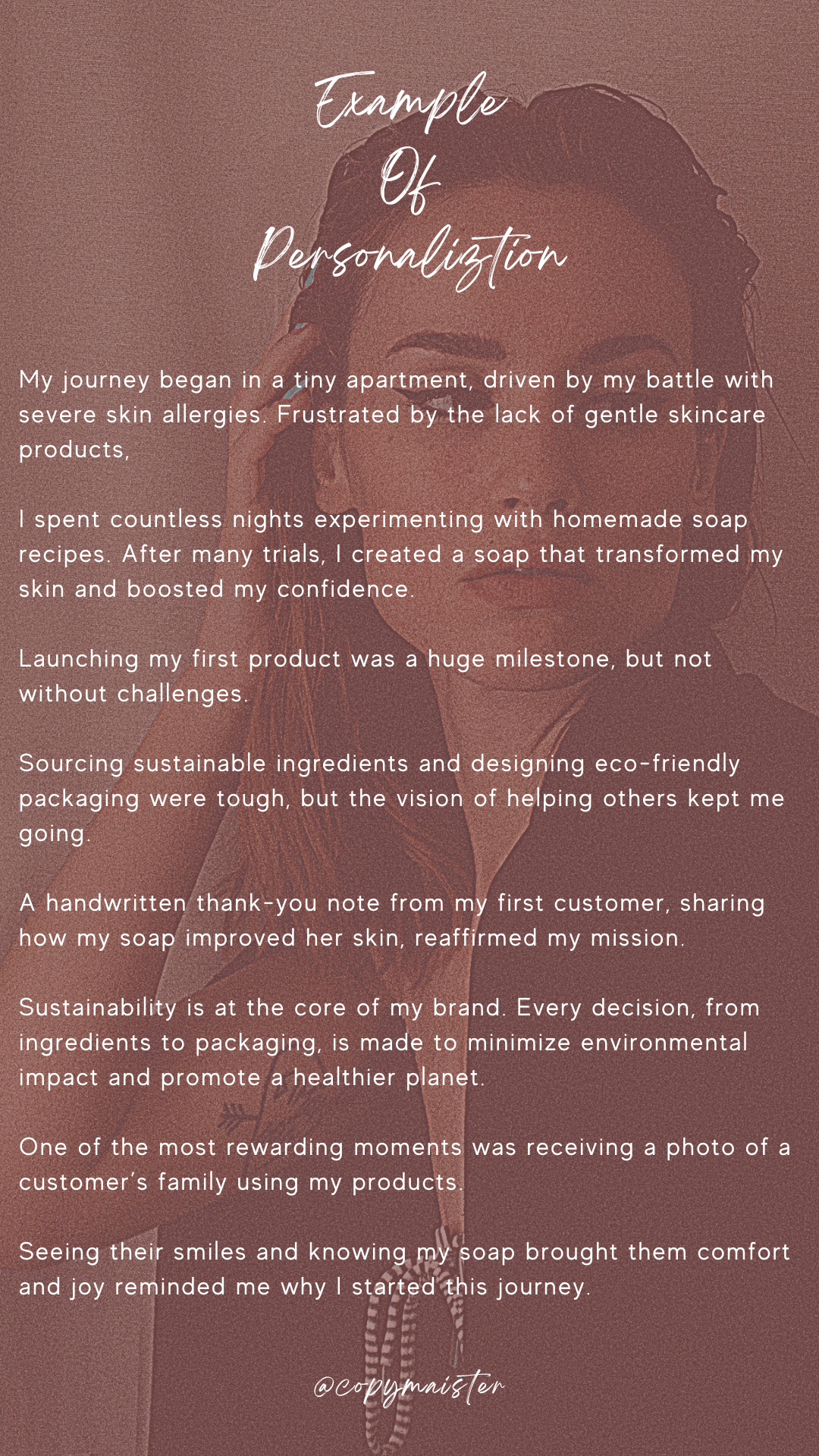
Step 3 Use Active voice
Write your brand story in an active voice to make it more engaging and dynamic. An active voice is a sentence in which the subject does an action stated by the verb. By using the active voice, you can make your brand story impactful and exciting.
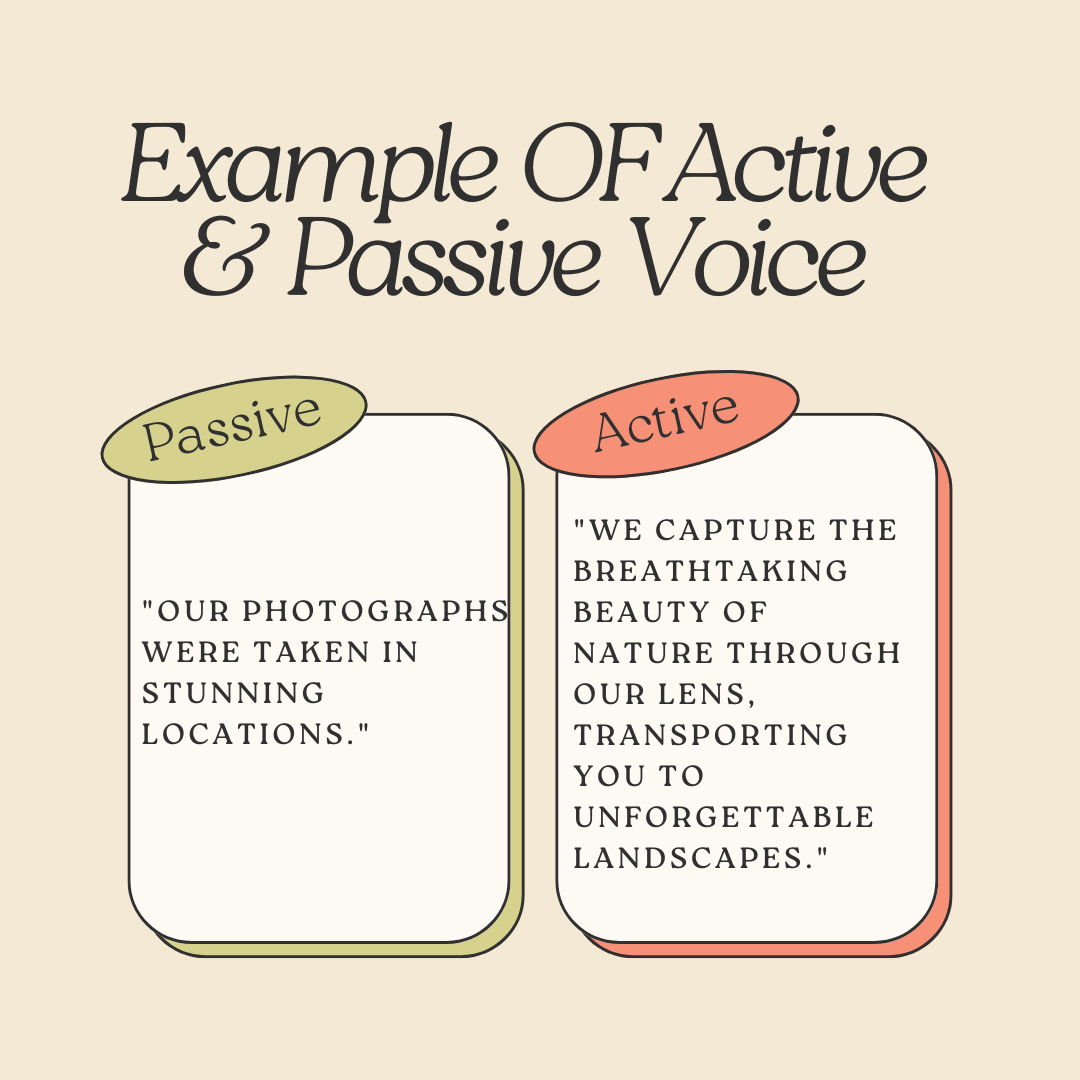
With the help of these three steps, using active voice, personalization, and finding your unique voice, you can craft an attention-grabbing brand story that will help you connect with your target audience.
So now it is your turn. Here is your assignment. I want you to write the mission statement of your brand story by using the words mentioned in the picture:
Three Secrets of Selling
In this section, we will explore the three secrets of selling because selling isn’t all about pushing your services.
Three essential three selling secrets can transform your sales approach. Let’s discuss what are those three secrets:
- Know your audience.
- Ask Questions.
- Lose Your Ego.
Know Your Audience
Understanding your target audience is an essential thing you should know, and it’s a cornerstone of successful selling.
You can not connect with your audience if you don’t know who they are, their pain, or the problem they are facing.
So, in order to understand your target audience, answer these questions:
- Who are they?
- What’s their goal?
- How can I help them get what they want?

You can answer these questions by doing research, visiting communities, look social surveys, checking out forums, and analyzing the problems of your target audience and how they discuss their problem.
Analyze everything you think is important in order to get a deeper understanding of your target audience.
Ask Questions
Asking questions is the second most important secret of selling, as it helps you engage your audience.
Questions encourage your target audience to participate in the conversation, and they encourage the target audience to think about what their needs are and how your service can help them fulfil their needs.
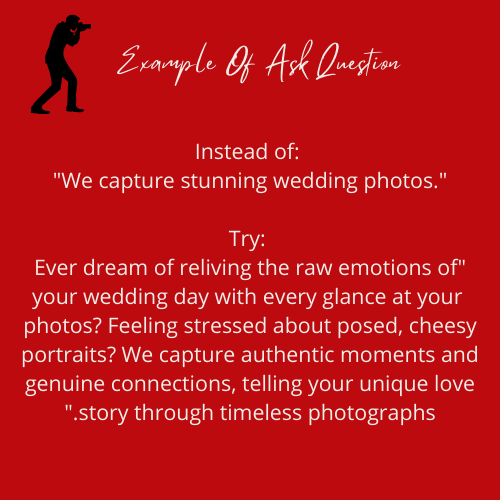
Lose the Ego:
Keep in mind that in your copy, you should not just talk about yourself. Focus on your target audience because they want to listen to only how your product or service can help them to get rid of the pain or problem they are facing or how it fulfils their desire.
The best way to do it is to remember the 80% 20% rule: your 80% copy should focus on the audience, and 20% you can use to say about yourself.
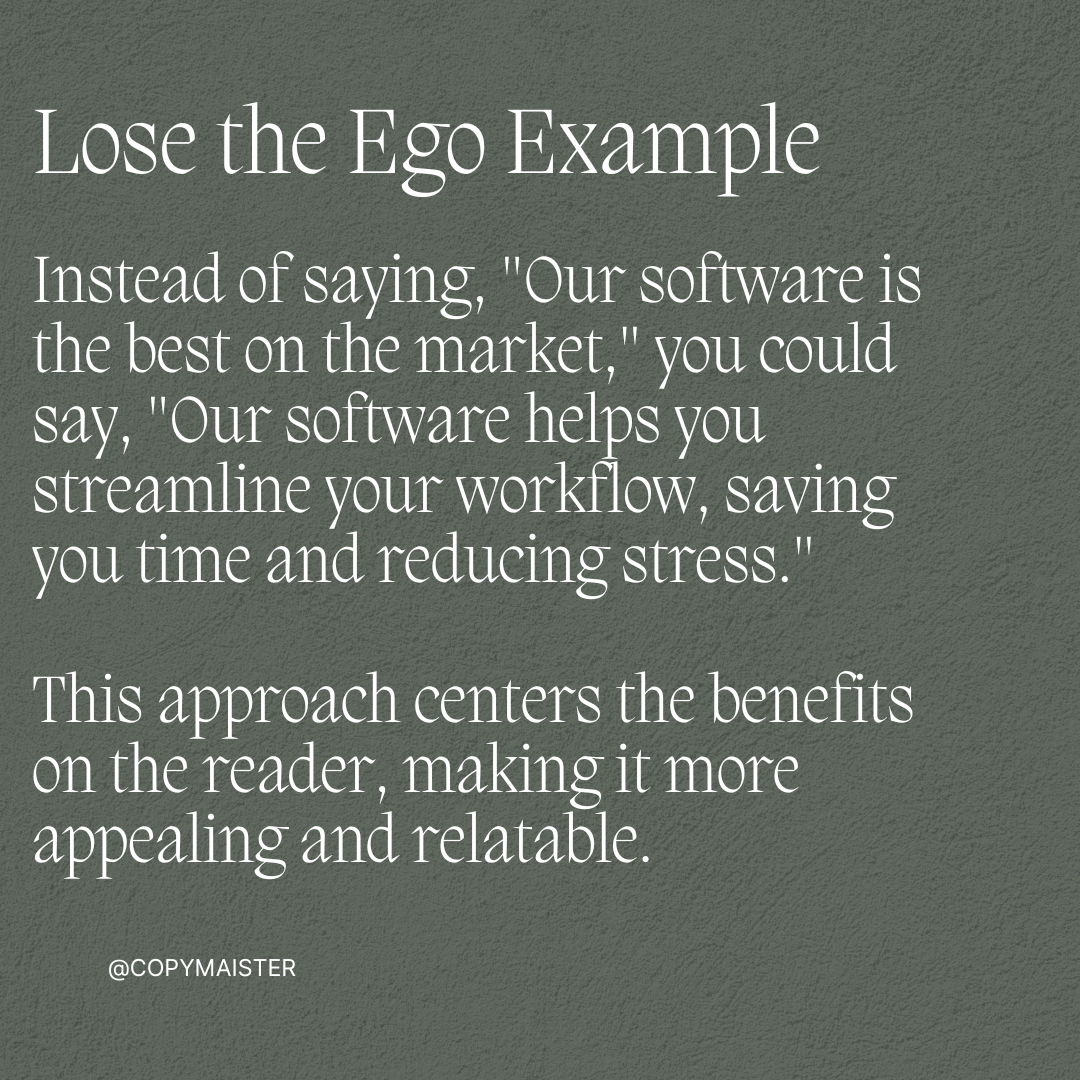
Engage five senses
When we talk with someone, 80% of the conversation is based on nonverbal, and when we write, our communication becomes flat because the nonverbal part is eradicated from our communication.
That’s the reason you find it persuasive when you do verbal communication. When it comes to written communication, when you have to read something, you find it dull.
So, in order to fill this gap, we use sensory language to make our written communication engaging and evocative.
These five types of senses we have, which we call the box for sensory magic:
- Sight.
- Sound.
- Touch.
- Smell.
- Taste.
Let’s understand each one in detail:
Sight
It’s all about painting a picture with words. It will make your copy engaging because by incorporating sight sense in your copy, you can make your target audience visualize that they are using your product or service.
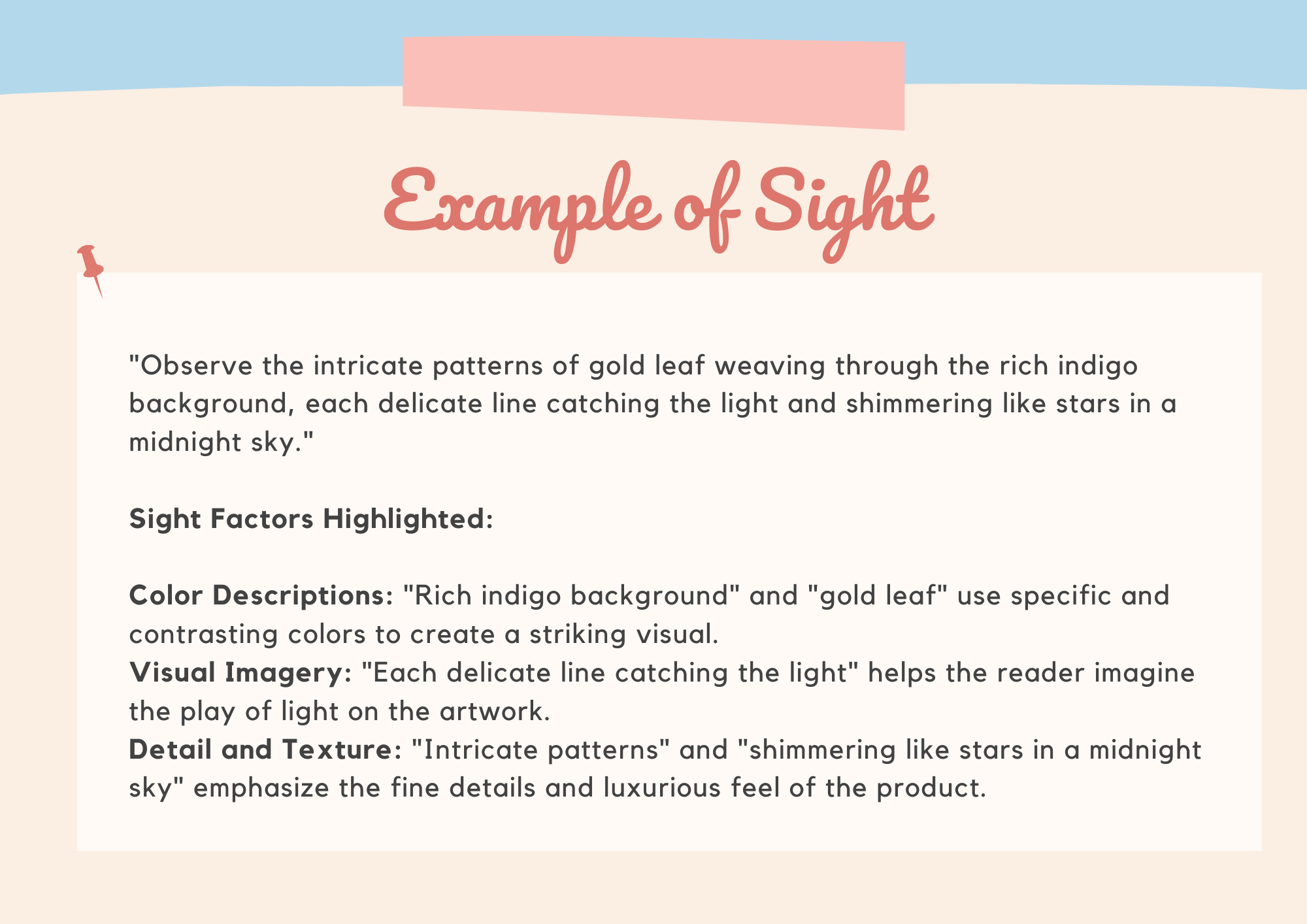
Sound
It is all about letting words make noise. By using this sense, you can evoke the emotion of your target audience because it will give them a multi-dimensional experience. By incorporating a sense of sound into your copy can make your message memorable.
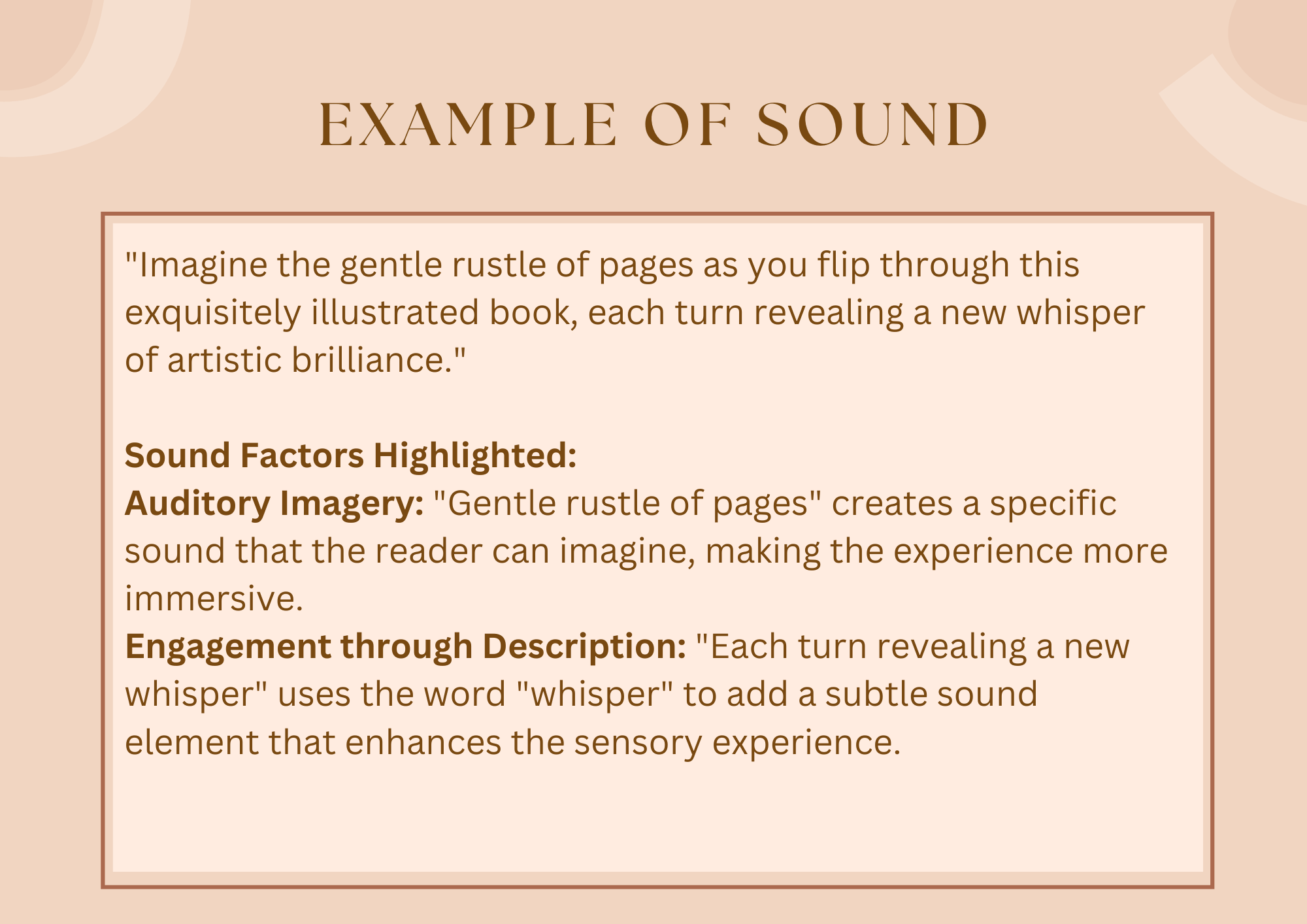
Smell
It’s all about evoking memories of your target audience with fragrance. This sense is closely linked with emotions and memory. Here, you incorporate words that should bring your product or service to life through its aroma.
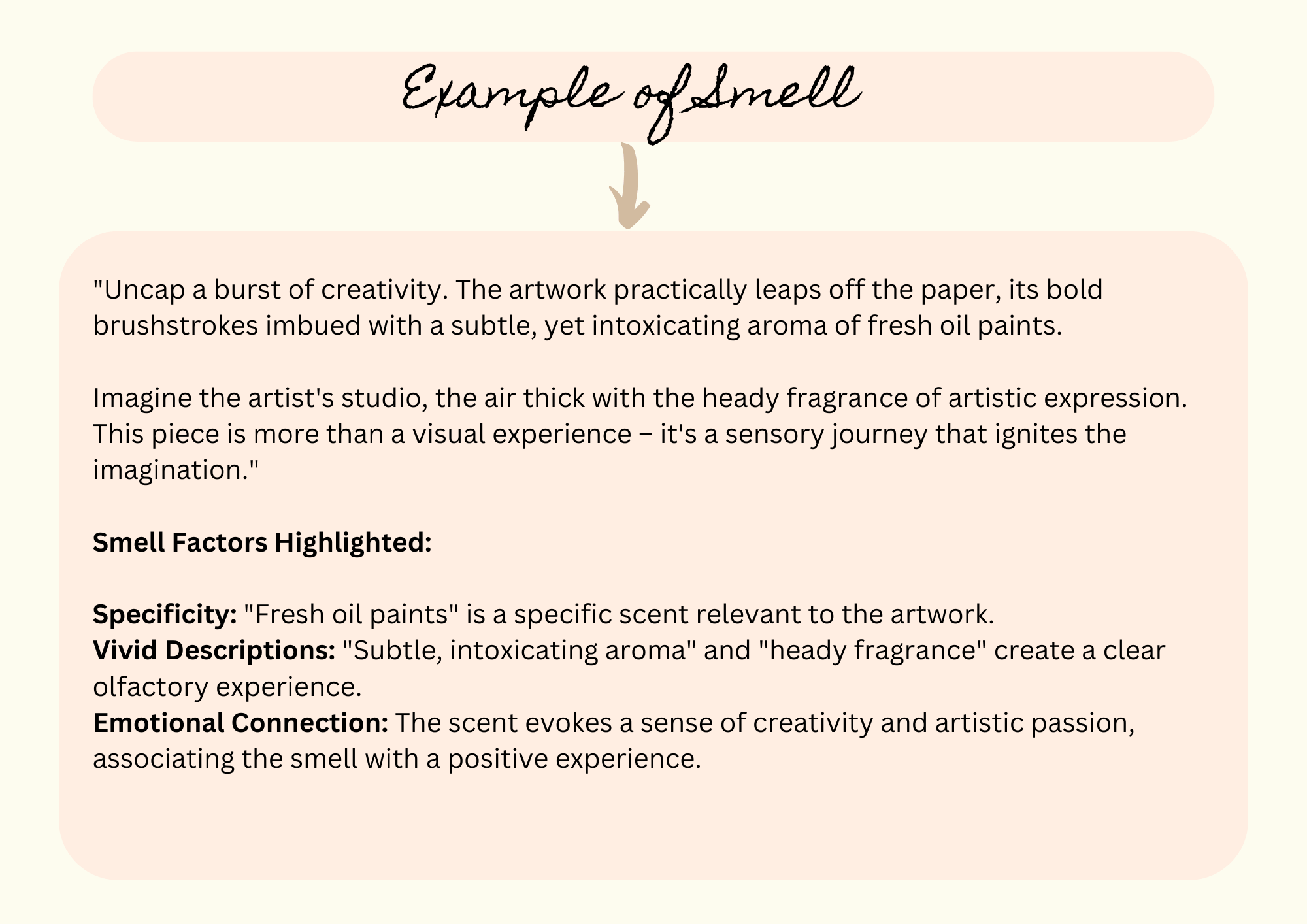
Touch
It’s all about letting the reader feel the texture of your copy, which gives the reader a feeling of reality through your words and gives your target audience the sense that they are touching your product.
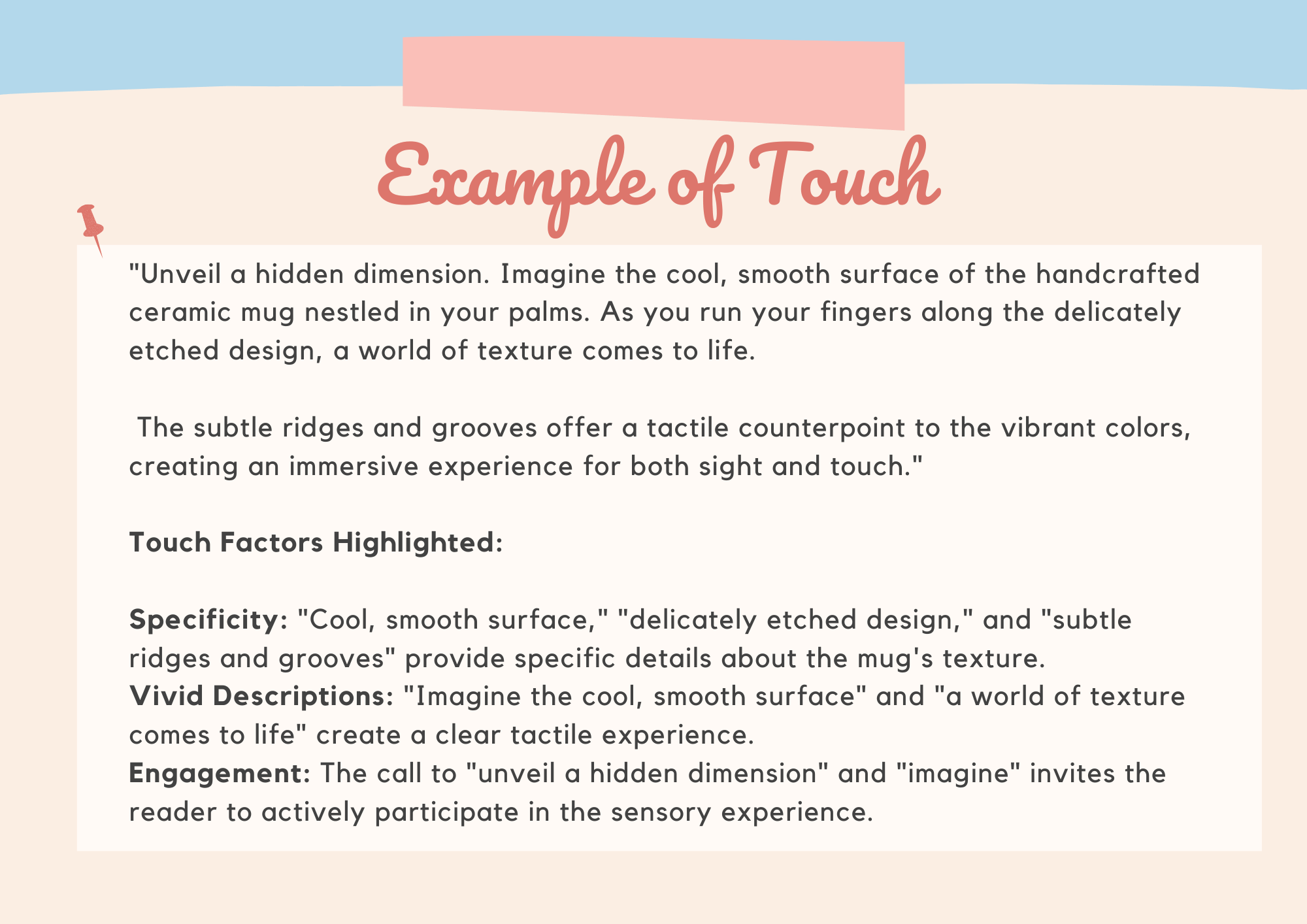
Taste
It is all about incorporating words that evoke a sense of positive taste association. Remember, the sense of taste isn’t limited to copying food products. You can use it for any service or product to create a sense of satisfaction or anticipation.
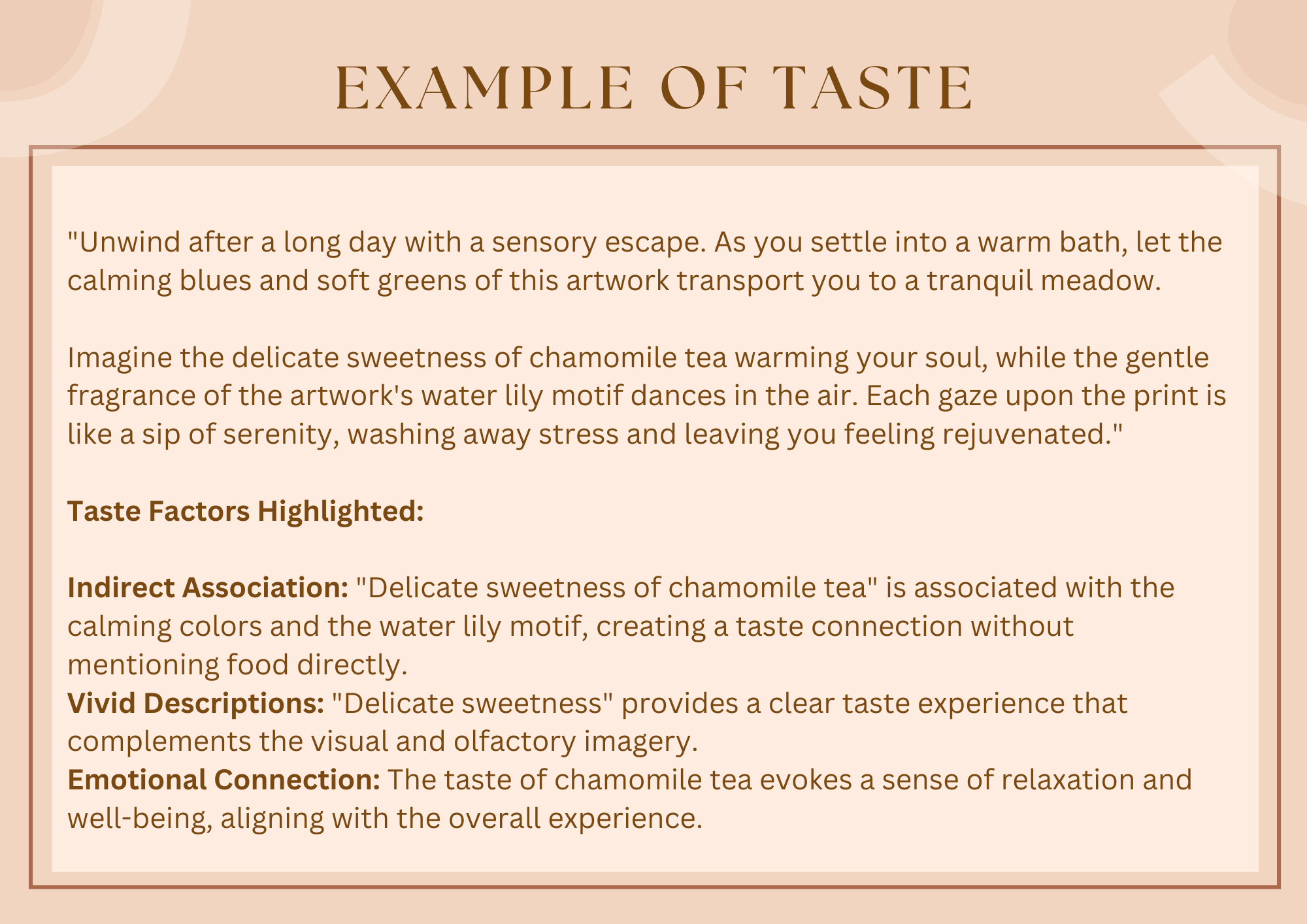
Write Product Description
In this section, I will discuss how you can write a product description that grabs the attention of your target audience.
In this section, we will explore three strategies that will help you craft your product description that persuade potential customers to buy your product:
Let’s discuss each one by one:
Link Feature with benefit
If you want your product description to resonate with your target audience, your product features must link with benefits. In simple words, a feature is a fact about your product, while the benefit explains what’s in it for the customer.
It is crucial for you that in your product description, each feature of the product links to a specific benefit.
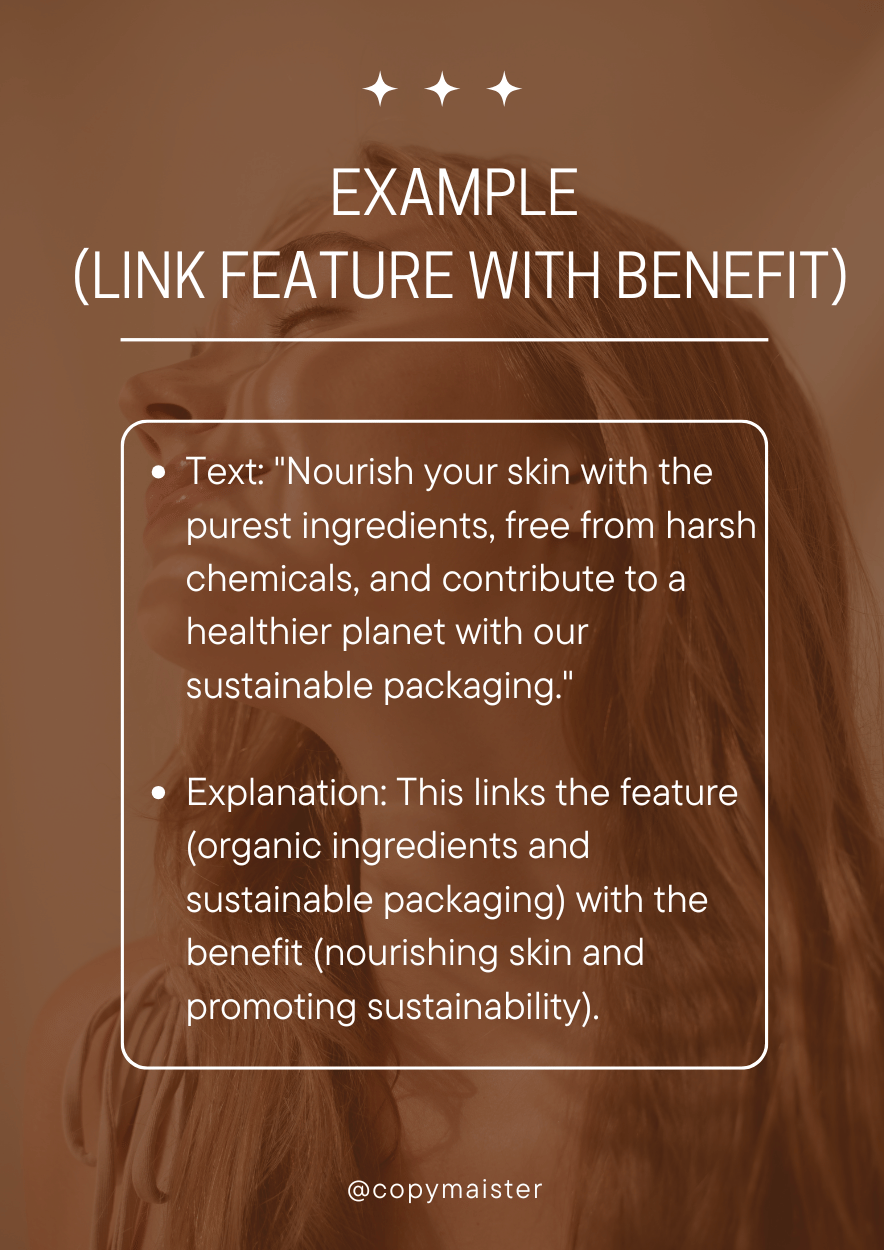
Answer Objections
Addressing the objections of your potential customer in your product description will help you reduce purchase hesitation and emphasize that you know about their concerns, which ultimately builds trust.
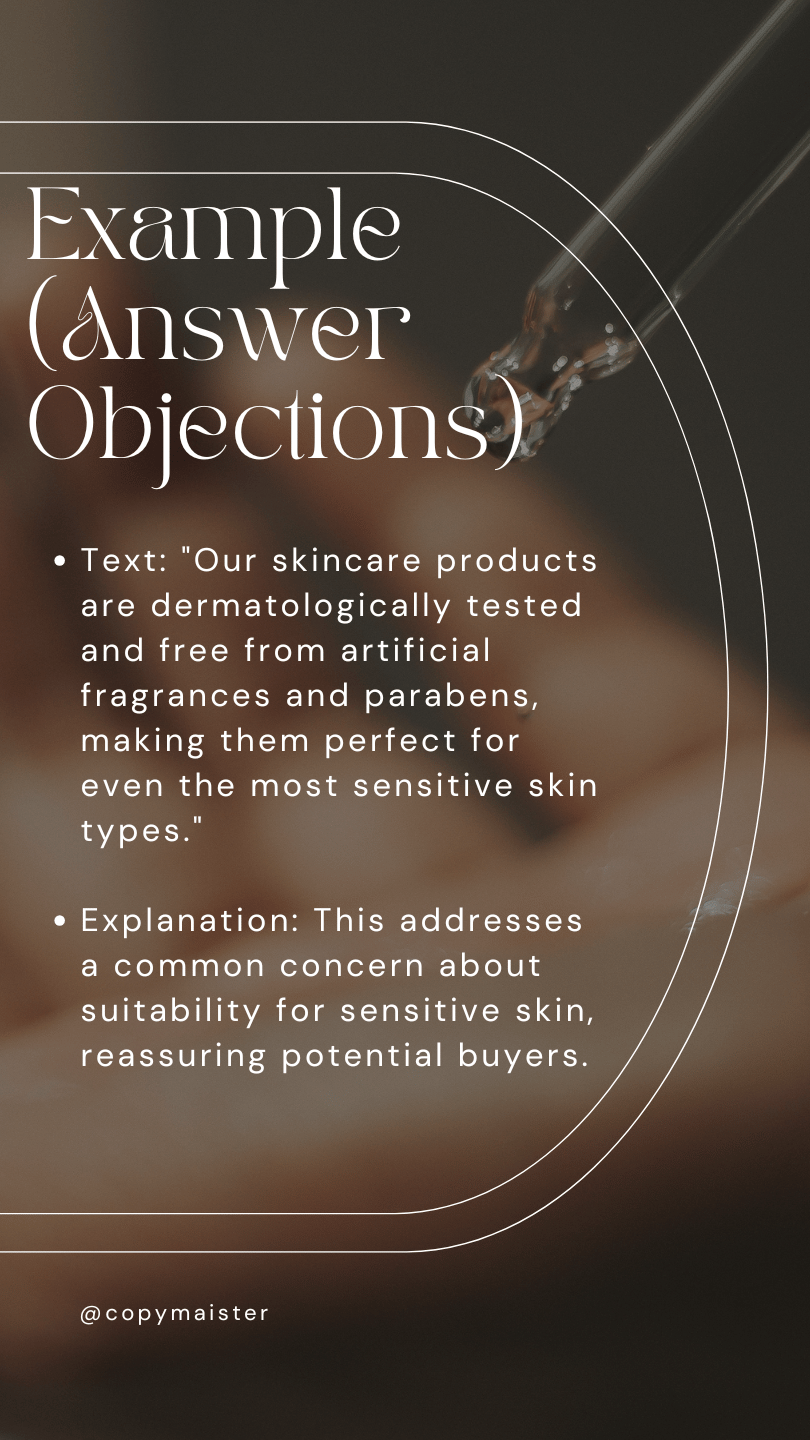
Give Them Ownership
Giving your product ownership to your customer means making them feel that they are using your product and how it is enhancing their lives. It helps you to amplify their desire to buy your product.

Now, let’s combine all three strategies and see what our product description will look like:
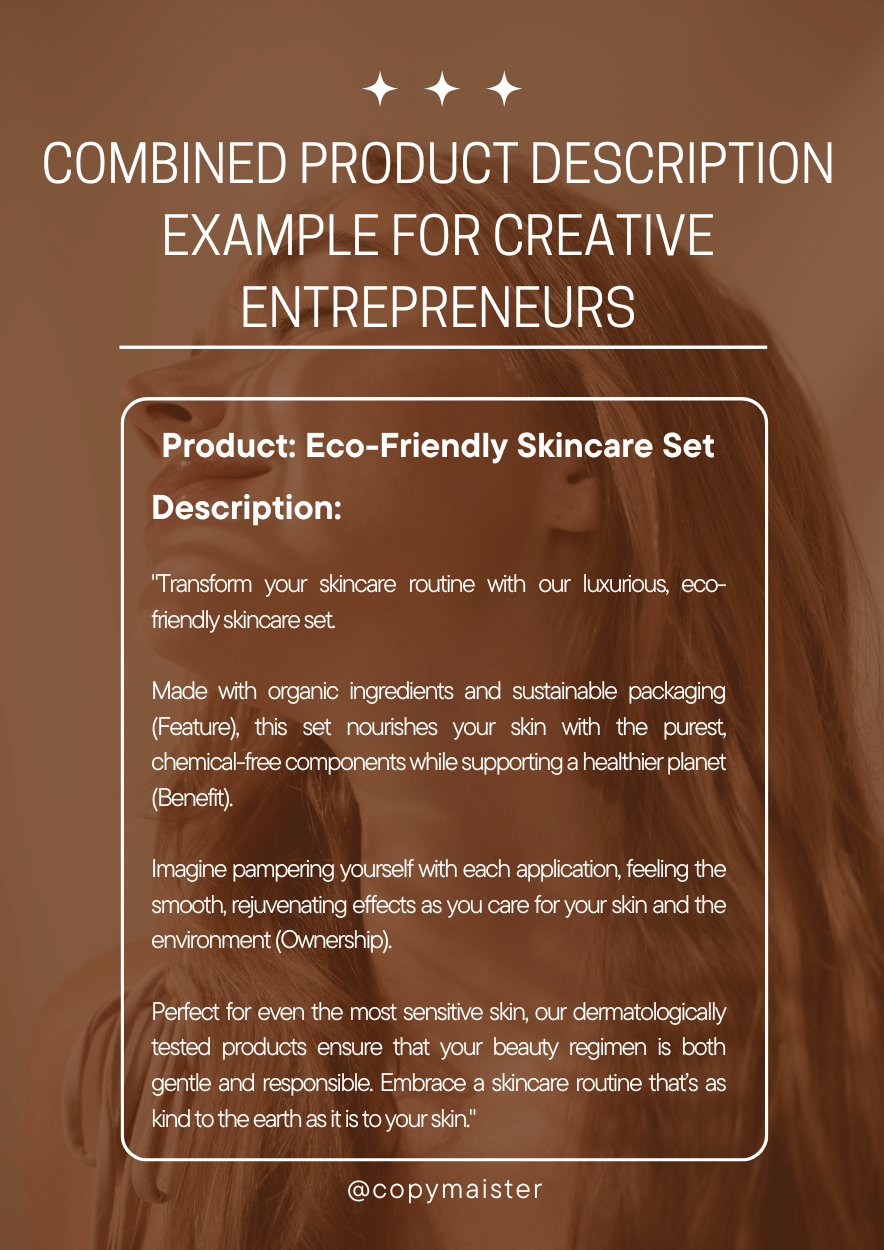
Best Copywriting Formula for Creative Entrepreneurs
In this section, I am going to share with you a tried and tested formula that will help you a lot when you write your marketing copy.
So, the formula that I will discuss with you is called AIDA. The reason behind choosing this formula is that it is versatile and simple to follow.
By using this formula, you can write copy for landing pages, social media posts, paid ads, emails, etc. In other words, you can use this formula to write any type of marketing copy.
Let’s Discuss this formula in detail:
AIDA stands for Attention, Interest, Desire, and Action. This is a four-step formula like a funnel. By using it, you can make a user journey that leads them to take the desired action you want. For a better understanding, let’s break down this formula and explain each step.
Attention
This is the first step, and your goal is all about grabbing the attention of the reader. This is the step where you place a hook for your readers, which encourages them to explore more.
Interest
This is the second step of this formula. Here, the main goal is to build interest and spark curiosity to know more about your offering.
Desire
This is the third step, where the goal is to build desire in the reader’s mind that they should try your product. You can do that by highlighting the benefits, in simple words, the positive outcomes they will get after using your product or service.
Action
This is the fourth and last step of the AIDA formula. The goal is simple: to force visitors to become customers. Here, you have to remind them this is the right time to buy your product or service.
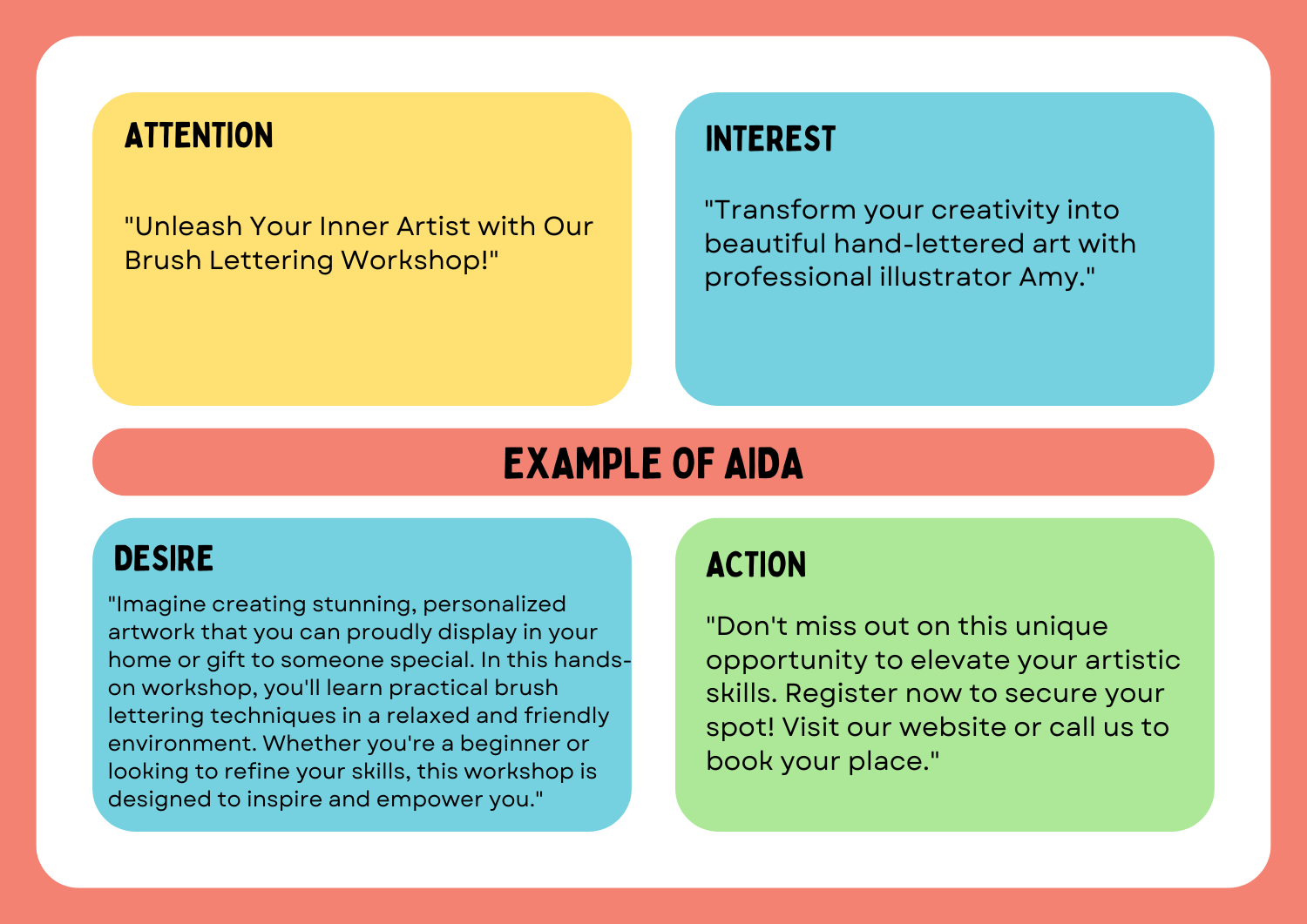
Easy techniques for a clear copy
This step is helpful because the techniques I am going to discuss with you will help you refine your copy and make your communication effective.
So here are three helpful techniques that will improve your writing:
- Splitting your sentence.
- Keep it simple.
- Trash the adverb.
Splitting your sentence
Splitting your sentence means do not write long paragraphs. Break long paragraphs into short paragraphs. It will enhance the readability and clarity of your copy.
Keep it simple
Do not use jargon, complex vocabulary, or too many technical terms. Keep your copy simple; your message should be understandable to a broader audience.
Trash the adverb
If you ever struggle to concise your copy, trashing a few adverbs is probably going to improve it because they often make sentences wordy, and removing unnecessary ones will make your copy consequential and direct.
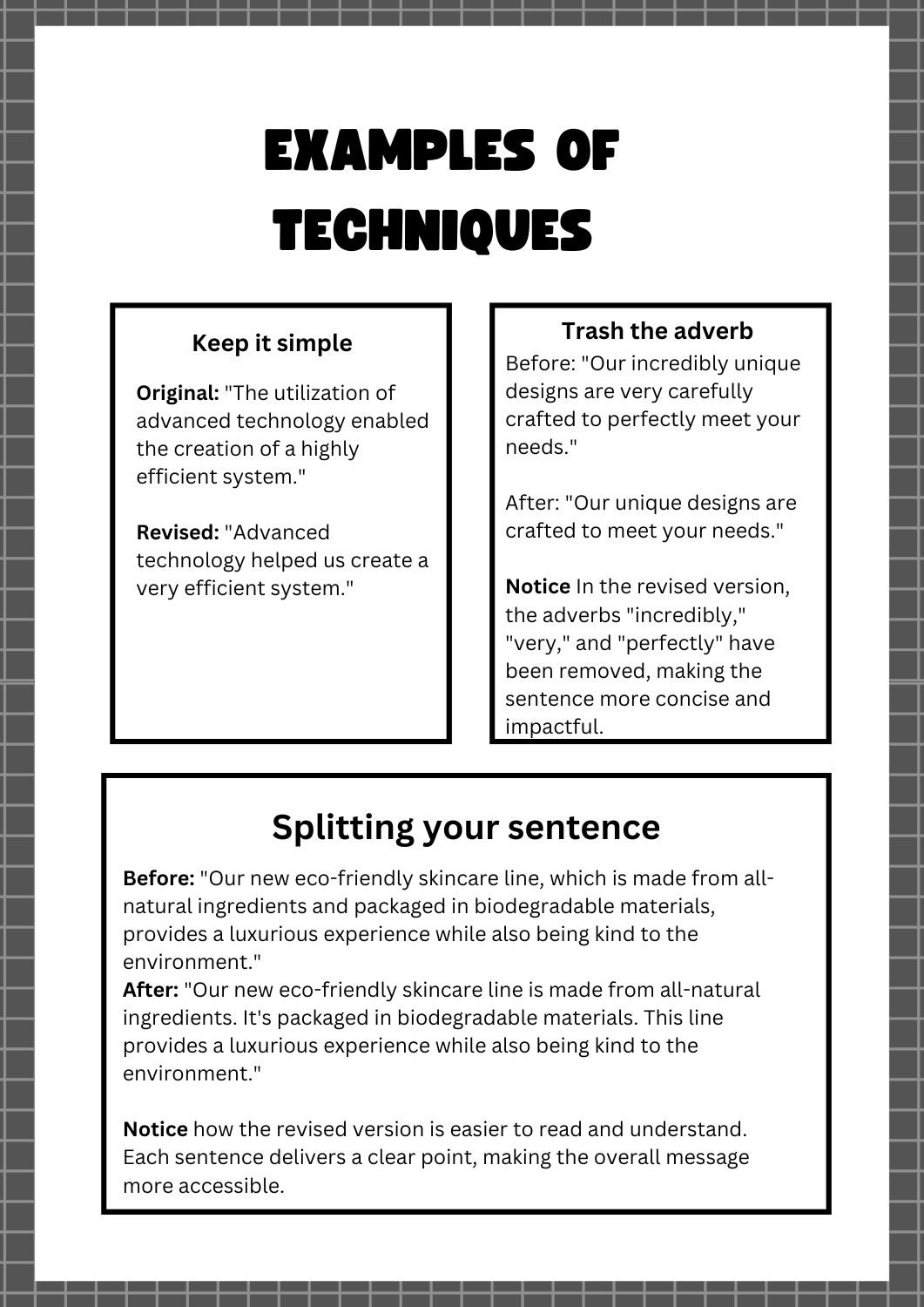
SEO Copywriting
Being a creative entrepreneur, you need to understand the SEO copywriting best practices in order to make your copy search engine-friendly.
SEO stands for search engine optimization. It helps you rank better on search engine ranking results.
I have written a complete guide for SEO copywriting, but for now, let’s discuss the main best practices that will help you make your copy search engine-friendly.
- Keyword identification is most important, so identify your keyword and place it naturally into your body of copy, meta title, meta description, and headings.
- Making your copy flow sensible means incorporating proper heading structure, as the main heading should be in (H1) and then accordingly palace subheadings by using heading tags (H2, H3, H4, H5).
- Use internal linking to link relevant content with each other.
- Using image Alt tags. It will help the search engines understand what this image is for.
- Write engaging meta descriptions and titles. Both should be unique, follow character limits, and incorporate keywords within them.
- Ensure your website is mobile-responsive.
- Make sure your website loads fast.
Writing for social media
In this section, I am going to discuss the key strategies of social media copywriting that you should follow when making posts for social media platforms.
Unlike your website, email, or direct mail, social media is different. Here, you have to face a crowded feed, which is really hard for people.
So, in order to craft a posted copy that promotes engagement and resonates with your audience, here are four strategies you should follow.
Address your reader
Make your copy relatable and address your reader. Craft posts that focus on their problem needs and desires to build a sense of connection with them with the help of personalization.
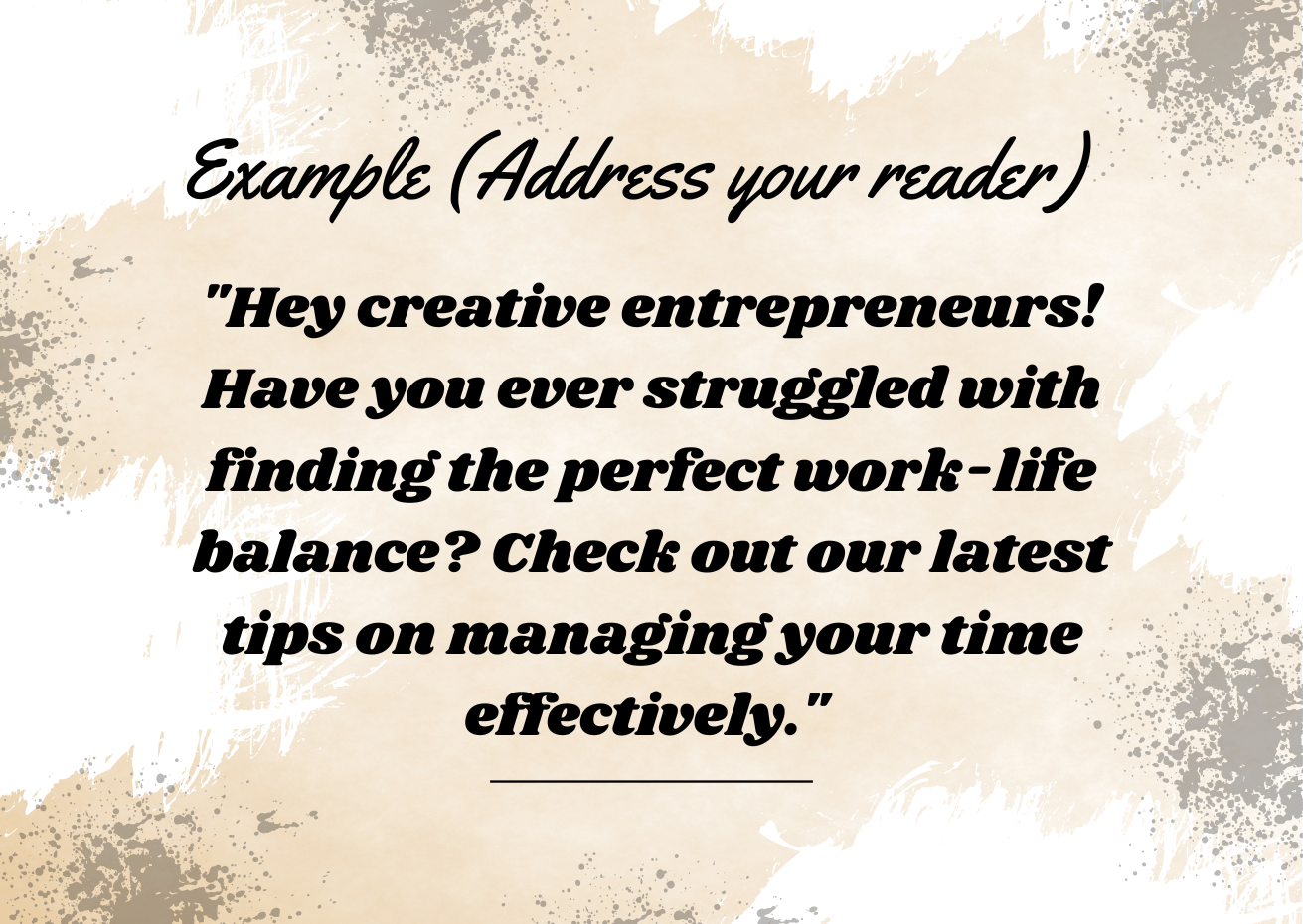
Get Casual
Remember, on social media, people come to connect with friends, socialize, catch up, etc. It is not the same as other platforms, so it is important to use a less business-like tone but maintain a tone that reflects your brand personality.
It will help your message to spread quickly while maintaining your consistent brand voice.
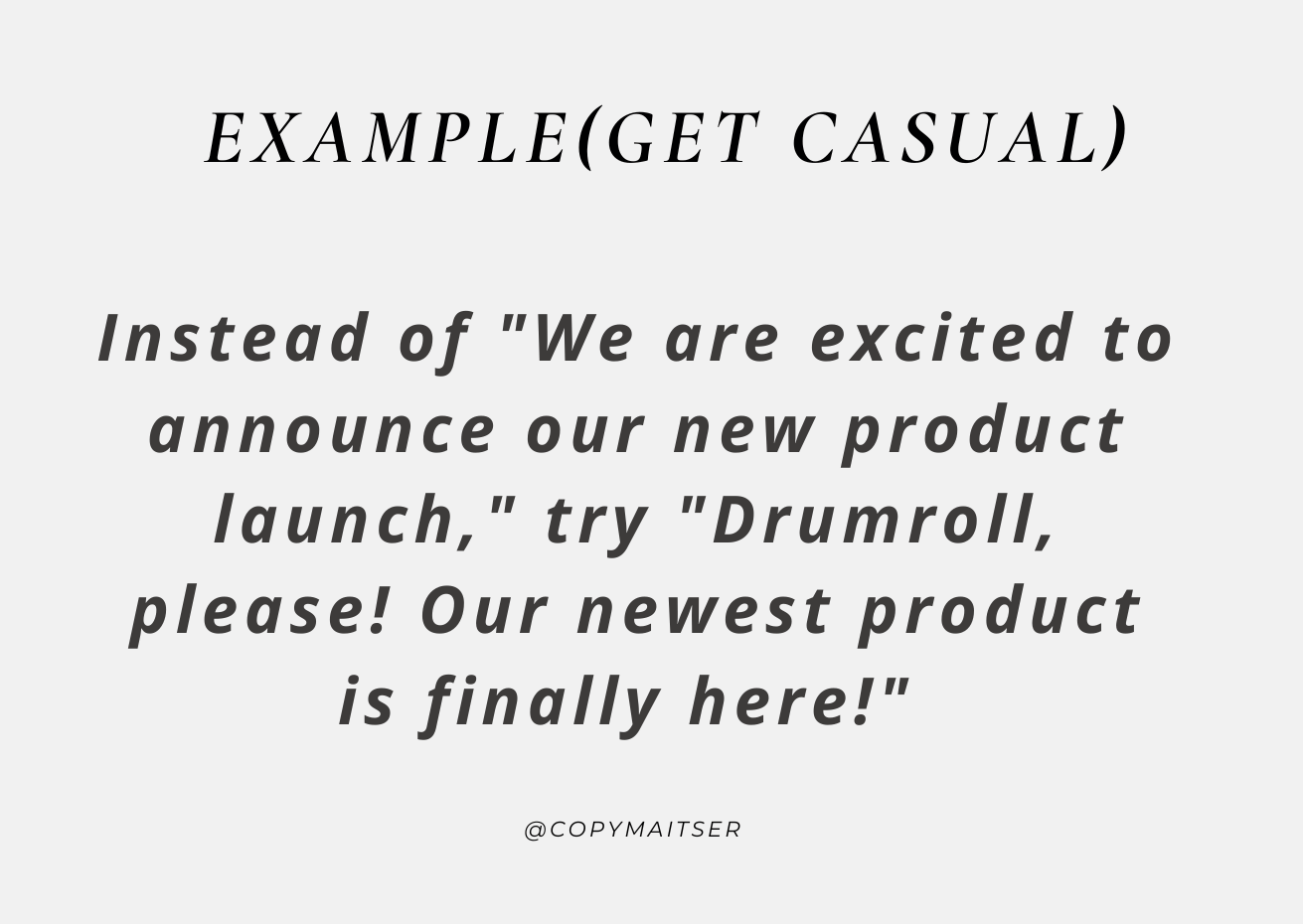
Define Objective
Define the objective behind each post, which means the purpose of the post, whether you want to engage, inform, entertain, or derive sales.
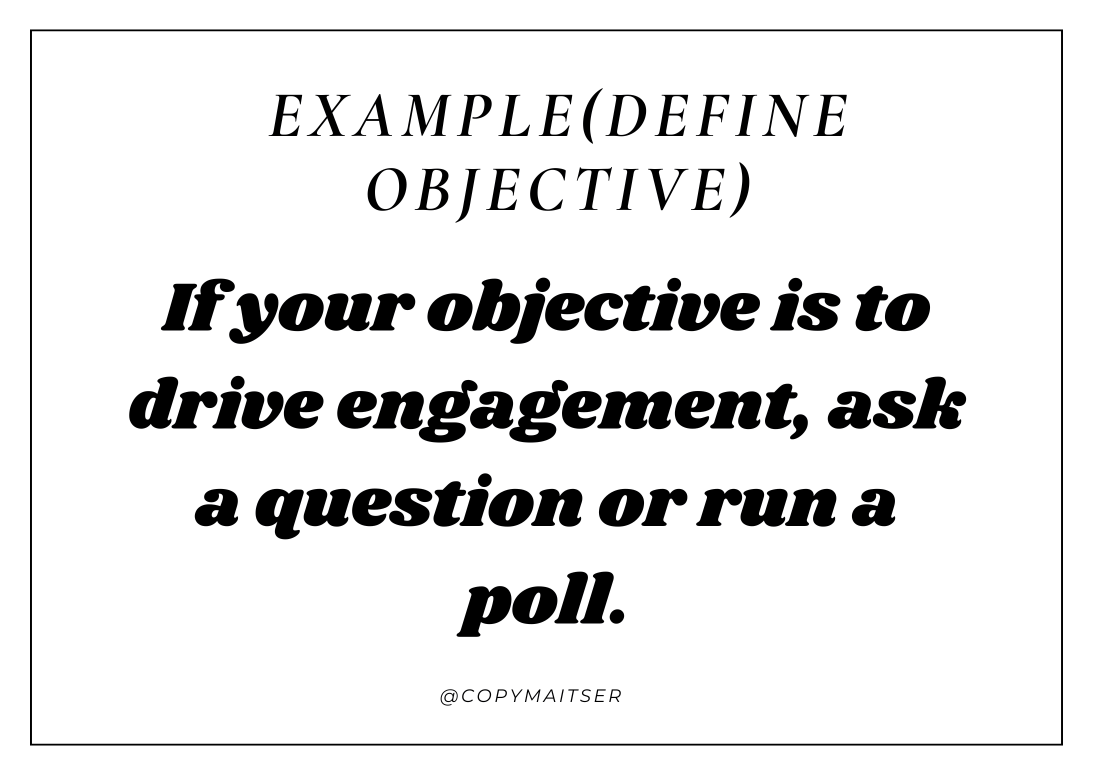
Mention Clear CTA
Use one call to action per post. Do not confuse your reader by mentioning multiple calls to action to say clearly what to do next, whether leaving a comment, clicking on the link, or making a purchase.
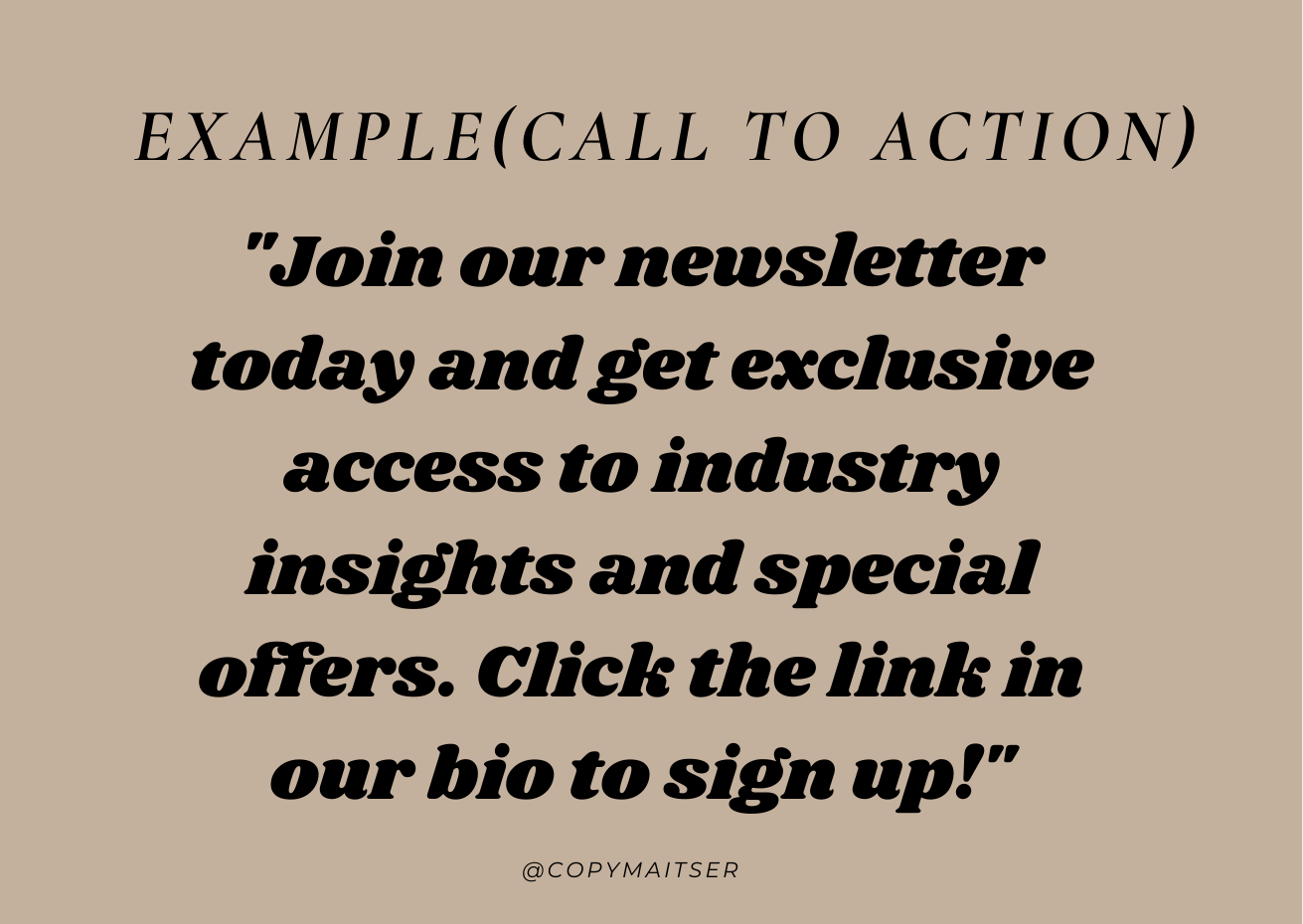
Conclusion
So that’s it. This guide has now ended. I hope you have learned how, as a creative entrepreneur, you can craft copy by using techniques, tips, and tricks I have shared with you in this entire guide.
Let’s discuss the key takeaways of this guide:
- The first and most important thing is that you have to have a clear idea of who your target audience is.
- In order to create an immersive experience, use sensory language based on the five senses: sight, touch, taste, smell, and sound.
- When writing a description of your product, link features with benefits, address the concerns of your target audience about your product and give them a sense of ownership.
- Use the AIDA copywriting formula to structure your copy.
- Use three techniques to refine your copy: splitting your sentences, keeping them simple, and trashing the adverb.
- Follow the rules of SEO in order to rank on top search engine page results.
- For social media, in order to make your post engaging, use three strategies: address your reader, get casual, do not be formal, define an objective for each post, and mention a clear CTA.
By incorporating these strategies, tips, and techniques, you can craft persuasive copy for your brand that resonates with your audience.
If you are still confused, you can send me an email. Thanks.

